Oregon State University’s College of Forestry is considering 3 management plans for the Elliott State Forest (ESF). Here’s how OSU’s preferred alternative for the ESF (“scenario B”) falls short:
- Allows cutting of significant amounts of older timber (up to 160 years).
- Consists largely of clearcuts and cuts taking 80% of the trees* – for the next 150 years.
- Includes extensive thinning of mature stands (removing 50% of trees).
- Includes clearcutting all thinned and retention (80%-cut) stands at 90 years of age.
- Includes extensive thinning (2000+ acres) of old-growth stands for the first 20 years.
- Perpetuates fragmentation of the forest by largely following the historic pattern of intensive land management.
Note: * These cuts are referred to in the report as “Extensive Retention”, with “residual density (RD) 20”, which means all but 20% of the trees will be cut. The bigger trees will be cut, leaving smaller trees and releasing most of the stored carbon.
OSU has an enormous opportunity and responsibility with regard to the Elliott. Rather than follow the traditional approach to timber management, they could make it into a world-class research forest. But this will only happen with substantial changes in their approach.
How to Get Involved: If you’re already up to speed on OSU’s involvement with the Elliott State Forest (ESF) planning process and want to take action, here’s what you can do (for more background info., read the rest of this post):
Submit comments to the Land Board and DSL using the contact form on the DSL website: https://www.oregon.gov/DSL/Pages/Comment.aspx
Tell the Land Board to reject any OSU management plan that includes cutting stands of mature timber (over 100 years old). Ask them to prioritize carbon sequestration and ecological resources over timber production. Remind them that the Elliott belongs to ALL Oregonians, and should be managed for the common good (not to maximize revenue for the Common School Fund). Tell them both DSL and OSU need to be much more forthcoming and transparent in their efforts (many of the technical documents were only recently made available and are particularly difficult to interpret – more on this below).
Email OSU’s leaders to express your views about OSU’s approach to the Elliott:
- Dean of the College of Forestry: forest.input@oregonstate.edu
- President Ed Ray: Ed.Ray@oregonstate.edu
- Board of Trustees: trustees@oregonstate.edu
OSU’s preferred management option (“Scenario B”) for the ESF would involve substantial harvests of mature timber (cutting lots of trees between 100 and 160 years of age). Tell the Dean to stop promoting harvests of mature forest under the guise of “forest research”. The 80% cuts and substantial thins (50%) they are promoting are NOT justified from a research basis! OSU’s team should be broadened to include OSU’s experts in carbon sequestration, and forest/stream/ wildlife ecology. These values should be prioritized far above timber production.
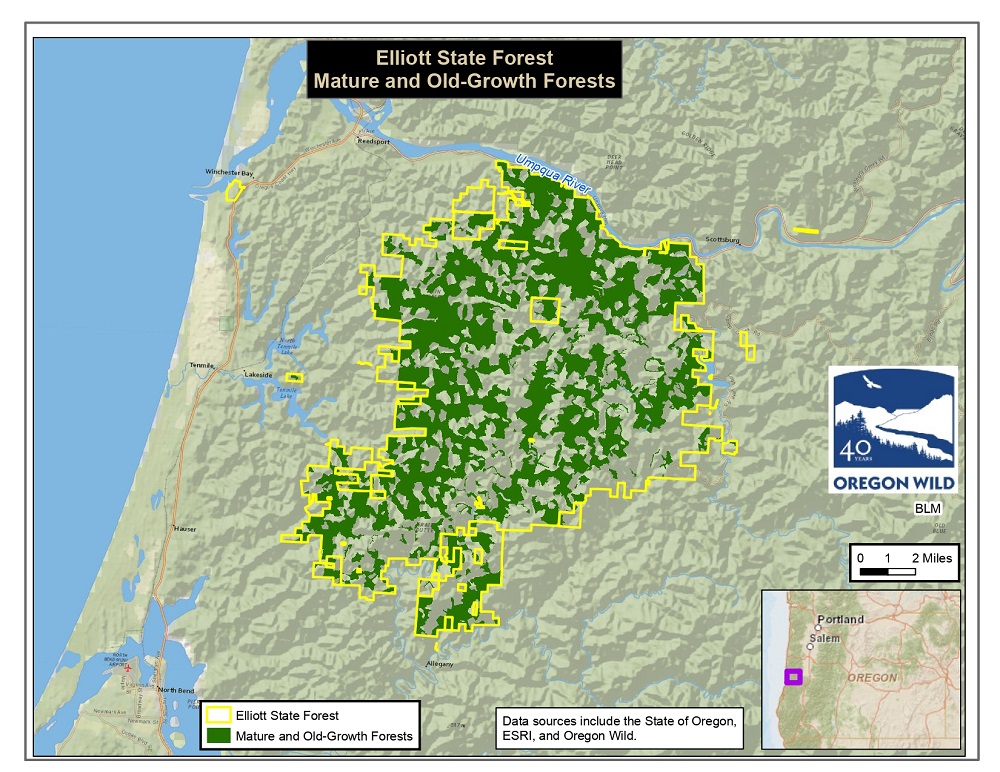
What is the Elliott State Forest?: Oregon’s Elliott State Forest lies in Coos and Douglas counties, in the Coast Range between Reedsport and Coos Bay. Roughly half of the forest is considered “old growth”, providing critical habitat for marbeled murrelets, northern spotted owls, and various species of salmon. Due to previous logging and forest fires, the Elliott is a mixture of two broad age classes: trees 60 years and younger, and those aged 100 to 180 years. The majority of the timber value is in the older stands (which is why OSU’s preferred plan targets them for harvest). The substantial amount of mature forest makes the Elliott one of Oregon’s largest, old-growth ecosystems and most important sources of carbon storage.
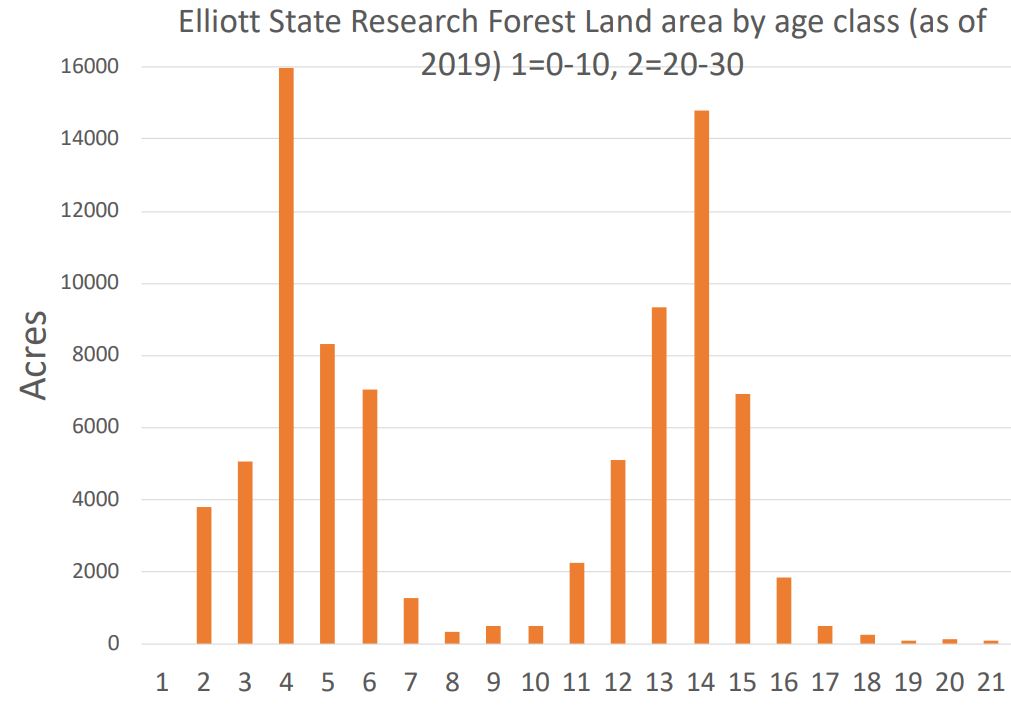
Drafting a management plan for the ESF is complicated because mature timber stands (and the threatened species they are home to) are spread widely across the Forest. Nearly 1/4 of all wild Oregon Coast Coho salmon originate in the Elliott’s watersheds. Marbeled murrelets and northern spotted owls have been detected throughout the ESF:
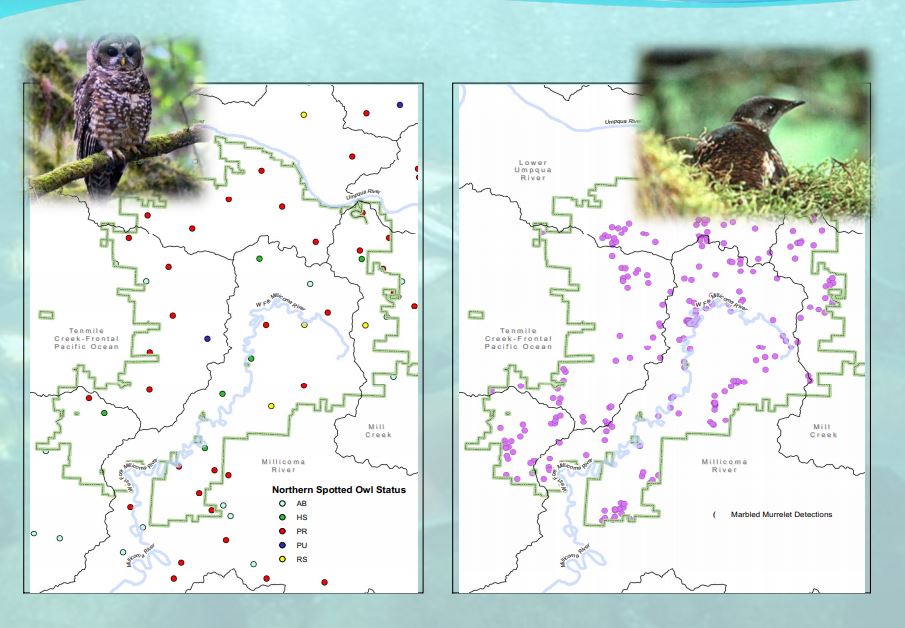
Recent History of the ESF: The Elliott State Forest became a subject of controversy and public scrutiny when the Oregon State Land Board (comprised of the Governor, Secretary of State, and the State Treasurer), adopted a new management plan in 2011. The plan aimed to significantly increase revenue generation for Oregon’s Common School Fund (CSF) by increasing clearcutting of the forest. The Plan also included increased protections for threatened and endangered species. Litigation and declining revenue from 2013 onward prompted the Land Board to take the unprecedented (and many would contend illegal) step of preparing to sell the Elliott State Forest at their February, 2017 meeting. The planned sale of a publicly-owned State Forest to a private company (Lone Rock Timber Management, a Roseburg company with international investors, and the Cow Creek Band of Umpqua Tribe of Indians) – prompted an enormous public outcry.
In response to outrage over the planned liquidation of the Elliott, the Land Board reversed its decision to sell the Elliott State Forest at its May, 2017 meeting. In December 2018, the State Land Board directed the Oregon Department of State Lands (DSL) to work collaboratively with Oregon State University to develop a plan for transforming the Elliott State Forest into a research forest.
The DSL Elliott website (https://www.oregon.gov/dsl/land/pages/elliott.aspx) states: “A successful plan will be consistent with the Land Board vision for the forest, which includes:
- Keeping the forest publicly owned with public access
- Decoupling the forest from the Common School Fund, compensating the school fund for the forest and releasing the forest from its obligation to generate revenue for schools
- Continuing habitat conservation planning to protect species and allow for harvest
- Providing for multiple forest benefits, including recreation, education, and working forest research”
Critics of the Land Board’s approach to the Elliott State Forest point to unrealistic expectations in their directive – especially the need to compensate the Common School Fund (CSF) through timber harvests. If the ESF could not provide adequate funding for the CSF in the past (while balancing protections for endangered and threatened species), why should we expect it to do significantly better under OSU’s management? The extra expenses associated with research and increased protections will almost certainly lower the overall revenue. How does the Land Board justify the continued focus on timber production, when climate change and the immense value of the forest for storing carbon isn’t even listed in their vision for the forest? Until our leaders recognize that we need a more holistic definition of “Greatest Permanent Value” of our natural resources, our future survival on this planet will be in jeopardy. Note that the Oregon Administrative Rules (OAR) do not even mention climate change or carbon sequestration in the definition of “Greatest Permanent Value” of our forests: https://oregon.public.law/rules/oar_629-035-0020
OSU’s Involvement with the Elliott: In December 2018, the Oregon State Land Board (comprised of the Governor, Secretary of State, and Treasurer) directed the Oregon Department of State Lands (DSL) to work collaboratively with Oregon State University to develop a plan for transforming the (~82,000-acre) Elliott State Forest (ESF) into a “research forest”. What the Land Board did not know at the time was that OSU’s College of Forestry was not the trusted leader in forestry education they assumed it was. They did not know OSU had been planning (for roughly a year and a half) to cut a cherished parcel of 200-400-year-old trees, in violation of their own management plan (that they’d abandoned a decade earlier). They did not realize that OSU’s cutting of old growth (in May of 2019) would result in national news coverage and disgrace for the College of Forestry. Even now, I doubt the Land Board understands the extent of OSU’s mismanagement of the Research Forests. You can read more about the history of these problems here:
Some may wonder what the Elliott has to do with OSU’s old growth. With roughly half of the ESF comprised of old-growth forest, and OSU now developing the management (= timber harvest) plan, the fate of the older forests may very well end up in OSU’s hands. While OSU may not own the land outright, their management plan for the Elliott will almost certainly guide the harvests. The long history of problems with OSU’s management of their existing research forests is grounds for concern regarding their plans for the Elliott. Past performance is the best indication of what to expect in the future. At the same time, the ESF represents an opportunity for experts within the College to establish a truly innovative research forest. If OSU ends up managing the Elliott, it would more than quintuple the size of their research forests. Unfortunately, OSU’s current approach with the Elliott seems to be focused more on timber production under the cloak of research.
Land Board Meeting: The December 10th, 2019, meeting of the Oregon Land Board in Salem was a key milestone in developing a management plan for the ESF. Governor Brown, Secretary of State Clarno, and Treasurer Read met with the Elliott Advisory Committee, Department of State Lands (DSL) staff, OSU, tribal, and various other representatives. Unfortunately, the Governor restructured the meeting on the fly, squeezing public comments in at the end. She left before the end of the meeting, missing all of the public testimony. Most of the meeting was taken up by predictable formalities and the various representatives expressing their appreciation for each other’s efforts – while the public waited patiently to voice their concerns. This disconnect between the process “insiders” and the public at large characterized the meeting. While OSU’s interim dean, Anthony Davis, quoted Aldo Leopold and spoke of climate change and sustainability, many shook their heads in disgust. One veteran observer reflected, “It was kabuki theater, until the peasants revolted!”.
When the public was finally allowed to speak (for a scant 2 minutes each), those in charge got an earful. Two icons of Northwest forestry, Dr. Jerry Franklin and OSU Professor Emeritus Dr. Norm Johnson presented a 3-page letter stressing the need to protect older, natural forests in the ESF. They wrote, “There is no ecological or environmental rationale for harvesting the older, natural forests on the ESF…Harvest of naturally regenerated forests that are greater than 100 years of age has essentially ceased on public lands in the Pacific Northwest…The strong opposition that inevitably occurs whenever such harvests are proposed makes clear that there is no longer social license for such logging… Attempts to justify harvest of these forests on the ESF in the name of science will be viewed as academic license at best or yet another attempt by foresters to cut older forests despite social opposition. We expect that such an attempt will be incredibly divisive – within the University and College as well as within Oregon society at large — and the conflict will ultimately make implementation of such a research plan infeasible.” You can read the full text of the letter here:
When these venerable experts of forestry and academia testify with strongly-worded concerns, we should all take note. Their letter (addressed to the OSU President, Dean and DSL Director) speaks squarely against OSU’s preferred plan for managing the Elliott – an alternative which involves cutting lots of older stands.
In my brief speech, I pointed out how difficult it is for the average citizen to understand OSU’s proposal to turn the Elliott into a “research forest”. The DSL website has more than 500 pages of meeting minutes and materials (riddled with undefined acronyms and jargon), plus an extensive folder of technical documents. With so much information to process, it really gets down to trust. Why should we trust OSU to manage the ESF, or even develop the plan?
The best way to understand how OSU might manage the Elliott is to look at how they’ve (mis-)managed their own research forests. I provided a long list of transgressions – from the recent cutting of old growth, to the decade-long abandonment of their research forest plans (not just for the McDonald-Dunn, but also the Blodgett), egregious violations of their plan (including the destruction of significant amounts of northern spotted owl habitat), and the 2006 Biscuit Fire publication controversy (https://en.wikipedia.org/wiki/Biscuit_Fire_publication_controversy). I argued there is already an extensive record to judge OSU’s management of “research forests” – and the record is not good.
In all, about 30 members of the public spoke, representing a diverse group of interests. The vast majority expressed concerns about OSU managing the Elliott. Many asked the Land Board to prioritize carbon sequestration over timber production. Several spoke for the trees and animals. Some were harshly critical of the process and notion that DSL and the Land Board have the right to determine how the Elliott should be managed.
Decoding OSU’s Plan for the Elliott: Outside experts who’ve studied the Elliott issue point to fundamental inconsistencies in OSU’s stated approach: they cannot fund the Common School Fund and their expansive program of research without cutting significant amounts of older timber – which reduces carbon sequestration and protections for threatened species. The exact amount of older timber OSU proposes to cut is buried in the technical reports. Decoding the information is a formidable task. You can find the technical reports and meeting minutes by clicking on the individual meeting summaries on the DSL Elliott webpage: https://www.oregon.gov/dsl/land/pages/elliott.aspx
At the Dec. 10th meeting of the Land Board, interim dean Anthony Davis presented the following map of the Elliott:
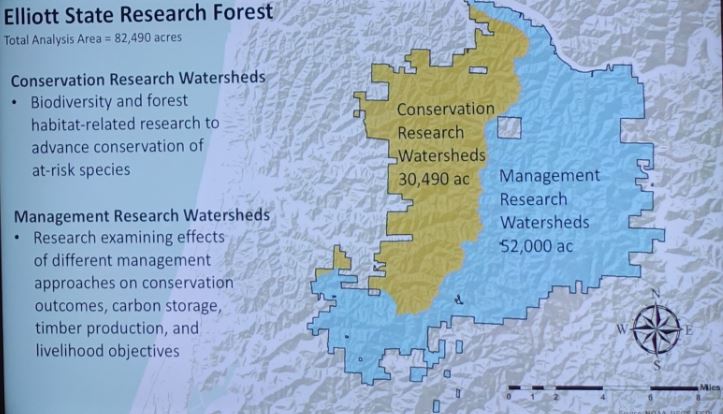
The divide between conservation and management “research watersheds” is important to note. Roughly 2/3 of the forest falls into the category of “management research”, with ~1/3 in “conservation research”. While the “conservation” section will be largely protected, the “management” section will undergo extensive management (= cutting). According to Davis, OSU’s preferred plan for the forest allocates 58% of the land for conservation, 26% to extensive, multiple-values management, and 16% to more intensive management. What he doesn’t explain is that this allocation includes substantial harvests of 100 to 160 year old trees, increasing fragmentation of the mature forest. This is illustrated by the following graph:
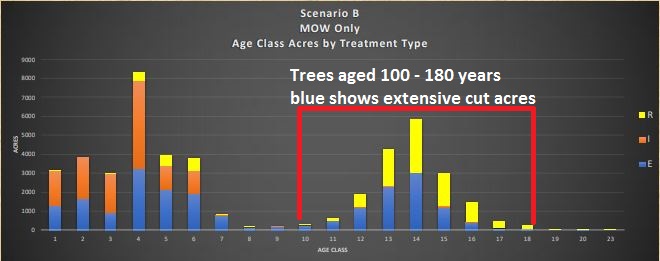
The units along the bottom of the graph are “Age Class” (in 10-year multiples), with the section in red extending from 100 to 180 years. The vertical units of the graph are acres of “treatment” (cutting, or thinning), with each line equal to 1000 acres. The blue bars show areas of “extensive treatment”, which consists of either cuts of 80% of the trees, or thinning (cutting) 50% of the trees. The yellow bars show mature forest reserves that would not be cut (though some thinning would occur for the first 20 years).
You can find all of these details in the report prepared by OSU’s consultant, US Forest Capital: https://www.oregon.gov/dsl/Land/Documents/OCT_ESRFAC_combined_1024-252019.pdf ):
It is fundamentally disappointing that OSU’s consultant proposed three relatively traditional approaches to managing the ESF. The worst scenario (C) would rely on “intensive treatments” (clearcutting) throughout the Elliott to cut as much timber as legally possible. The “least worst” scenario (A) would still cut trees up to 100 years of age, and rely on clearcuts and severe thinning for the next century and a half. OSU’s preferred alternative, “Scenario B”, would cut a substantial amount of older trees (100 to 160 years of age). By failing to provide any options based on the principles of ecological forestry, both OSU and their consultant have framed the choices firmly within the bounds of traditional forestry management. By providing three poor choices and choosing the middle one, it is as if they were trying to say, “Hey, it could have been worse – we chose the one in the middle!”.

The blue bars in the above graph (“Intensive Regen”) represent clearcut acres. The green bars (“Extensive Retention”) indicate cuts taking 80% of the trees. The bars with green slashes (“Extensive Thin”) and blue slashes (“Intensive Thin”) show acreage cut (thinned) by 50%. These severe cuts seem designed to produce timber, not support research.
I reached out to Tom Tuchmann at US Forest Capital, the lead author of the (Oct. 25th) management plan for the ESF, to ask some questions about his report. The report is full of undefined acronyms and technical jargon, making it difficult to interpret. I wanted to make sure the details I’ve included in this blog piece are accurate. He initially agreed to talk on the phone, but later rescinded his offer after talking to the folks at OSU. The Interim Dean and his staff have been largely unresponsive to my inquiries, so his suggestion that I contact them was not very helpful. Another veteran observer of the Elliott process ran into similar problems some weeks ago. His detailed questions sent to the OSU team leader many weeks ago have yet to be answered.
Next Steps: At the end of the recent meeting, the Land Board decided to have DSL and the Elliott Advisory Committee continue working with OSU to refine a management plan for the ESF. You can read DSL’s press release about this here: https://www.oregon.gov/dsl/News/Documents/ElliottStateResearchForestExplorationContinues_12.10.19.pdf
The ESF represents a one-of-a-kind opportunity to implement and test principles of ecological forestry management, as well as study and protect threatened species and carbon sequestration. We will continue to monitor OSU’s role in the Elliott, advocating for positive change. Our hope is that the new Dean of the College of Forestry, Dr. Thomas DeLuca, will change the College’s direction (and their involvement in the Elliott) in a positive way. OSU could turn the Elliott into a world-class research forest – but it won’t happen without substantial changes in their approach.
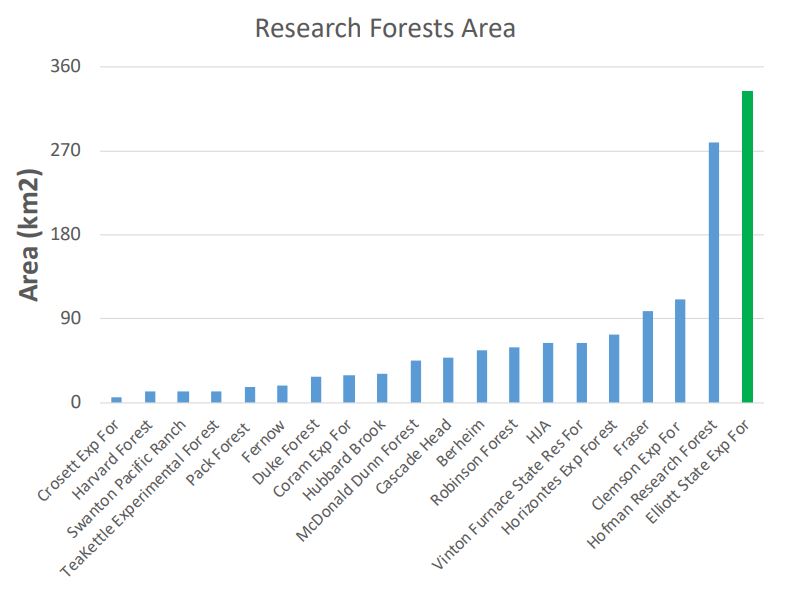
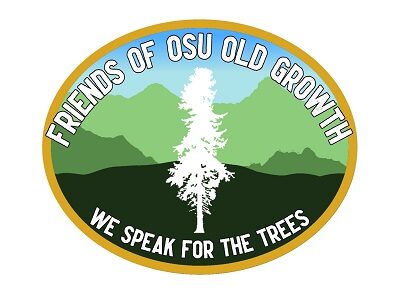
1 thought on “The OSU-Elliott Problem…”
Comments are closed.